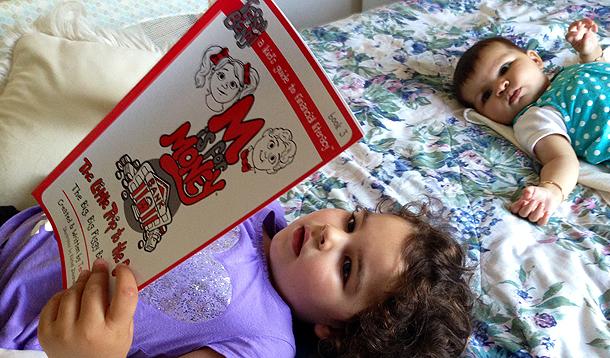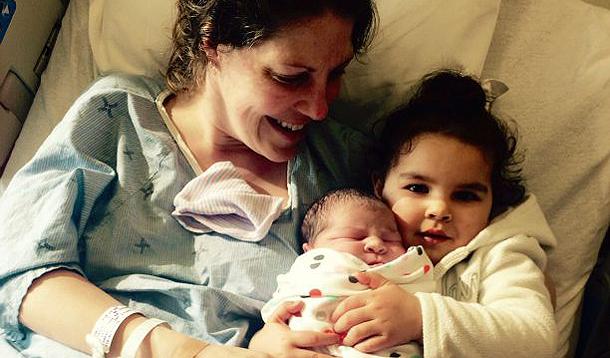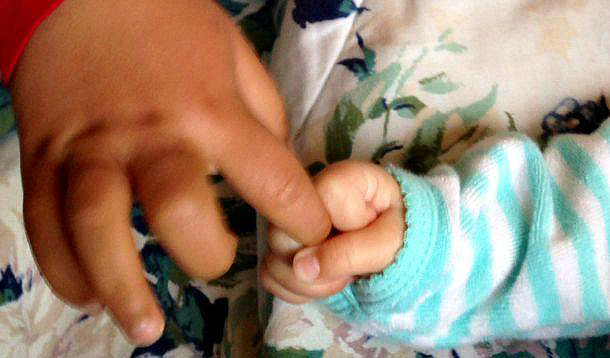
The approach I take when teaching my students about money and finances is: Learn by doing. I believe people learn best by using facts in real-life contexts. The more kids are challenged to solve meaningful problems using their math skills, the more the answers will become ingrained in the child’s long-term memory, easily accessible for future use.
The Ontario Curriculum requires students be able to name our coins and solve simple math problems using dollar amounts, however, teachers must encourage kids to go beyond this basic understanding of money to provide true financial literacy. Kids need to understand how money works: how to save it, borrow it and donate it to others. Young people need to know how to budget, pay bills, and overall, how to manage their money properly.
How can you teach your kids about money at home? Here are 5 fun strategies to get you started:
I successfully used this method in my classes, students were able to earn “scholar dollars” for jobs they did at school. On Fridays, the school store was open for the students to spend their money. Fines were imposed for breaking certain rules. If a student frequently lost school supplies, they would have to rent them from the teacher’s desk for a small fee. Students interviewed and were hired as the banker, store employees, desk clerk and other jobs in the classroom. These students revelled in the responsibility and really rose to the challenges of the program.
A similar program can be adapted in your home, using real or fake money. Kids gain a sense of pride, as well as some financial insight, when they take responsibility for their own money.
When mastering a new skill, it is important to present information in a variety of ways and allow kids to interact with that information. Stories and games are two great activities to reinforce learning, without relying on memorization. When trying to teach younger kids about money, consider the program M is for Money, authored by successful Canadian entrepreneur, Teresa Cascioli.
M is for Money is a series of nine books, aimed at children ages five through nine, which follow the financial adventures of seven year old twins, Tessa and Benji. In the first three books: The Little Piggy Bank, The Little Lemonade Stand, and The Little Trip to the Bank, the twins learn about (and teach your kids!) about saving and spending, how earning money can require hard work (but can also be very rewarding), all about bank accounts and so much more. The steps to set up a token economy are also outlined (see point #1). There are games and activities at the end of each book and in the free, downloadable teaching guide. There are also extras such as magnets, bookmarks, and notepads that are available for purchase.
By anchoring the money concepts in a narrative, M is for Money allows kids to relate to the characters and their understanding of finances. The books provide a great opportunity for questions, conversation and further exploration. The activities in the books and teaching guide offer fun ways for kids to practice what they have learned.
The first three books in the M is for Money series are available now in eBook, soft and hardcover format at www.MisforMoney.ca, Indigo/Chapters, Mastermind Toys and other retailers across Canada. Also available for download are colouring games, a lemonade stand activity, songs, money games and activities. You can also print reward and achievement certificates for your children or students each time they achieve a milestone of financial success. Together, all of these tools help to bring money concepts alive for young kids.
Sometimes your kids may hear a message better from someone else. Do you know a store or restaurant owner? A charity worker? A successful entrepreneur? Let your children hang around them for a while and talk about what it takes to run a business. I know my daughter has already picked up an understanding of money by spending time at her father's restaurants, and she is not yet three years old.
Kids have great ideas. If your child feels passionate about one of her ideas, help her bring it to market. I once supported an inspiring team of students in creating, producing and marketing a product to earn money for a charity. The students, ages nine through eleven, ran the entire project, from inception to the final donation of money, including showcasing their design at a business expo. Although I was there to guide the team, the kids surprised me with how much they could complete on their own. It’s all about learning through doing! In today’s social media driven world, it’s become much easier to get a message out there. If your child has a great idea, support them in bringing it to the people. The learning will stay with them for a lifetime.
As a child of the 80’s, I coveted a Cabbage Patch Kid to adopt and care for. I remember my parents answering my pleas with, “We will not spend $24.99 on a doll.” I was told if I wanted a Cabbage Patch Kid, I would have to buy her myself. I scrimped and saved my $2/week allowance for months. When I had enough, my dad took me to the store and Loretta Yetta became part of my family. I loved her all the more for the financial sacrifice it took to get her, and to me, that yarn-haired baby was worth every penny. I have never forgotten that lesson. Some things are worth saving for. I don’t know what will be the coveted item when my daughters are old enough for this lesson, but I am sure the price tag will be heftier than $24.99. Whatever the cost, there will come a time when my daughters will also have to scrimp and save to get what they want (as long as I can keep their doting grandparents, the very people that taught me that lesson in savings, from giving in to their demands!).
Forget about memorizing the names of coins and counting up totals on flash cards – let your kids learn by doing. They may just surprise you with their developing business savvy! The point of education is to equip our kids with the tools they need to succeed in the future. Without a strong understanding of money concepts, young people will be unprepared to cope when financial hardships strike. The human brain develops in leaps and bounds in the first decade of life. This is a great time for kids to learn about finances and develop healthy, positive view of money.


So, the first month of school is almost done and you’ve received countless permission forms and letters and sent in money for this and that. Hopefully by now you have a sense of your child’s teachers – their philosophies on education and their style of discipline. And maybe you’ve formed a few opinions.
And maybe you think your child got a raw deal this year with a less-than-awesome teacher. Obviously, you and your children are not going to love every teacher – but how do you decide when it’s time to take action? What’s a concerned parent to do?
I’m a big believer in helping kids face difficult challenges and I have seen amazing growth come from kids coping with struggles. However, you are the parent and you know your child best. Most teachers I have had the pleasure of working with are dedicated, hard-working professionals who do whatever they can to accommodate the needs of their students. Most, but not all. If this is the year your child needs some help dealing with a bad teacher, then use it as a teachable moment and show your child the right way to handle conflict.
![]() RELATED: The Staggering Amount Teachers Spend On School Supplies
RELATED: The Staggering Amount Teachers Spend On School Supplies

When you're expecting your first child, you'll most likely be all consumed in preparing for baby (like I was and like most other first-time moms are!).
I had several apps I consulted frequently that included countless checklists about what to pack for the hospital. I also read many books and endlessly researched the best baby products. My bag was packed months in advance and included a plethora of the latest and greatest newborn gear.
Preparing for baby #2 is a whole different story. In my case, I had an energetic toddler running amok, who was in the throes of potty training. I was teaching kindergarten at the time, which is it’s own brand of energy zap. My husband and I were in the depths of opening our second restaurant. And, of course, my body was busy building a tiny human. In short, I was busy! Never mind cross-referencing checklists, I was lucky I managed to get my parental leave paperwork in.
Amidst the chaos, I did manage to learn a thing or two about preparing for second (third, fourth, or seventh!) babies:
Talk about the new baby and help prepare the elder siblings for their new role as big brother or sister. If you are feeling brave, let the elder brainstorm names for the new baby, although I don’t suggest giving a toddler ultimate naming power, unless you think the baby can live with the moniker Annalula Violetplop. Basically, the more the elder can be involving in preparing for the younger, the easier the transition.

If your kids are close(ish) in age and you still have all the stuff from the eldest, give it new life with the youngest. You may want to splurge on some clothes if the two are different sexes. Both of my children are girls, so I was able to reuse absolutely everything. You can also reuse cribs, playpens, bouncy chairs and the like. The only thing (besides diapers and wipes) that I bought for #2 was a baby swing, because I figured you have to have a few more places to put the baby down. I was right – that swing has saved me on many occasions.
What does a newborn really need?
![]() Diapers - Often the hospital will provide some diapers, but I suggest bringing your own as well. My sweet bundle of joy came out rather large and the pack of tiny, newborn-size Huggies that the hospital provided just didn’t do the trick. Luckily, I had packed some bigger diapers. I like Huggies, because my babies were explosive poopers and the elastic gather at the back waistband contain those leaks better than other brands. They are also soft, snuggly, and mild on freshly minted baby skin. By the way, the little newborn diaper were fabulous for my eldest daughter’s doll who needed to be changed almost as often as the real baby, so they did go to good use!
Diapers - Often the hospital will provide some diapers, but I suggest bringing your own as well. My sweet bundle of joy came out rather large and the pack of tiny, newborn-size Huggies that the hospital provided just didn’t do the trick. Luckily, I had packed some bigger diapers. I like Huggies, because my babies were explosive poopers and the elastic gather at the back waistband contain those leaks better than other brands. They are also soft, snuggly, and mild on freshly minted baby skin. By the way, the little newborn diaper were fabulous for my eldest daughter’s doll who needed to be changed almost as often as the real baby, so they did go to good use!
![]() Wipes - Hospitals often do not provide these. For me, it is vital to have a cleansing product on hand during diaper changes. Wipes are not only great for diaper changes, but also awesome for freshening up sticky toddler fingers before big brother or sister touches the newborn. And remember how you spent ages sterilizing everything for that first baby of yours? Now that I am a second time mom, I find wipes give a good and fast clean to many baby items. I'm a fan of Huggies Natural Care Wipes. I find them thick, durable, and effective, while being gentle on tender little tushies.
Wipes - Hospitals often do not provide these. For me, it is vital to have a cleansing product on hand during diaper changes. Wipes are not only great for diaper changes, but also awesome for freshening up sticky toddler fingers before big brother or sister touches the newborn. And remember how you spent ages sterilizing everything for that first baby of yours? Now that I am a second time mom, I find wipes give a good and fast clean to many baby items. I'm a fan of Huggies Natural Care Wipes. I find them thick, durable, and effective, while being gentle on tender little tushies.
![]() A going home outfit - Make it a simple, weather appropriate one-piece, so you aren’t searching for little socks or struggling with fancy ribbons. Don’t worry if it’s the same outfit an elder sibling wore. Seriously, baby doesn’t care and you’ll be gazing at that squishy newborn face in pics, not focused on if the baby is wearing ducky jammies from three seasons ago.
A going home outfit - Make it a simple, weather appropriate one-piece, so you aren’t searching for little socks or struggling with fancy ribbons. Don’t worry if it’s the same outfit an elder sibling wore. Seriously, baby doesn’t care and you’ll be gazing at that squishy newborn face in pics, not focused on if the baby is wearing ducky jammies from three seasons ago.
![]() A safe infant car seat - If you are using a hand-me-down from the elder, be sure it’s still in good working order and has not expired (yep, car seats have expiry dates). Ensure it is installed correctly and give it a good cleaning before reusing.
A safe infant car seat - If you are using a hand-me-down from the elder, be sure it’s still in good working order and has not expired (yep, car seats have expiry dates). Ensure it is installed correctly and give it a good cleaning before reusing.
I was told that giving birth is a lot faster the second time around, and in my case it was definitely true. When the labour pains start, you’ll want to get yourself to the hospital, birthing centre, or wherever you plan to have your newest addition - trust me, you won’t want to be scrambling for childcare at that time. Unless you’ve trained your firstborn as your labour coach, be sure you have their caregiver ready and waiting! If your babies are like mine, they only want to come in the wee hours of the morning, so I’d suggest having the caregiver stay at your place so that your eldest can remain in their familiar surrounding.
Snuggles are important for all involved. In recent years, a multitude of studies have documented the incredible power of human touch – it can elevate mood, calm anxieties, improve immune function and promote several other lasting health benefits. In the case of babies, the potential effects of touch are even more profound.
Where I gave birth, the maternity ward walls were adorned with posters touting the benefits of holding and hugging newborns, especially with skin-to-skin contact. Babies who are snuggled more show improved oxygen levels, increased stable heart rate, enhanced sleep, less crying – and the list goes on. Did you know Huggies is dedicated to providing more hugs to the babies who need them? They are working to bring hugging programs to more hospitals throughout Canada. Check out this heart-warming, baby saving program (sorry, but if you are suffering mom hormones, this one will definitely make you cry happy tears).
Don’t stress too much about bringing home baby number two or baby number seven (if that’s your plan!). Each new addition has a way of quickly fitting in and making you wonder how your family ever felt complete without them. And those first, sweet, delicious sibling hugs are one of the most magical parenting moments of all.
The power of touch goes far beyond making babies feel good. Hugging and cuddling are a vital part of healthy development and doctors are placing more importance on hugging than ever before. Thanks to the Huggies® #NoBabyUnhugged program that helps set up baby hugging programs in hospitals, more babies will get the hugs they need.
See how little hugs are making a big difference and learn more about how you can show your support and become a No Baby Unhugged mom to get free Huggies® Diapers for your newborn.


This is proudly sponsored by our friends at Huggies® Diapers.
www.huggies.ca
Connect with Huggies® on their Facebook page: www.facebook.com/HuggiesCanada